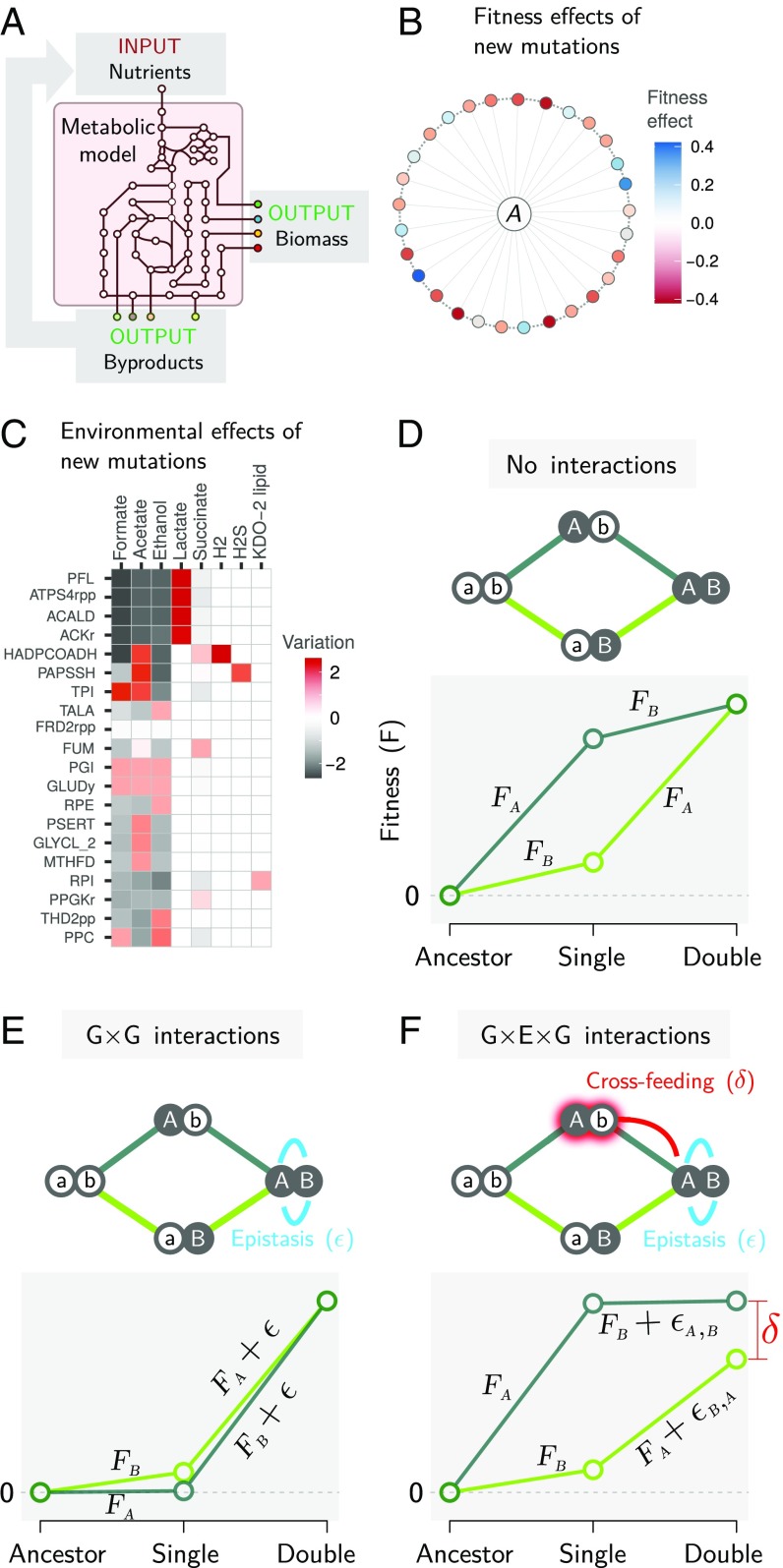Fig. 1.
Measuring deformability in the E. coli metabolic fitness landscape. (A) Schematic depiction of dFBA simulations. Given an input in the form of nutrients, metabolic fluxes through an explicit and empirically curated metabolic model are optimized to maximize the biomass growth yield. The optimal metabolic fluxes produce metabolic byproducts that are released to the external environment, becoming part of future inputs. (B) A subset of genotypes differing from our E. coli metabolic model by a single mutation (an added or deleted reaction), colored according to their effect on fitness in competition with the ancestor (A). (C) Environmental effects of a subset of mutants expressed as the variation in the profile of secreted metabolites compared with the ancestral E. coli genotype (computed as log-modulus transformed difference in the amount of a given secreted molecule; Materials and Methods). Mutant labels are given in Biochemical Genetic and Genomic (BiGG) database notation. (D) Two loci fitness landscapes in the absence of gene–gene interactions in which the fitness effect of each mutation is the same in all genetic backgrounds. The fitness of each genotype was calculated in direct competition with its immediate ancestor. Mutations A and B correspond to the addition of GLYCL_2 (glycine cleavage system) and AIRCr (phosphoribosylaminoimidazole carboxylase), respectively. (E) Two-loci fitness landscapes with gene–gene interactions giving rise to epistasis (ε). Mutations A and B were SO3R (sulfite reductase) and PAPSSH (phosphoadenylylsulfatase), respectively, simulated in a constant environment. (F) Two-loci fitness landscapes in which one of the mutants transforms the environment, leading to cross-feeding toward the double mutant. Mutations A and B correspond to the addition of PAPSSH and HADPCOADH (3-hydroxyadipyl-CoA dehydrogenase). In addition to regular epistasis, this led to a noncommutative epistatic shift (δ = εA,B − εB,A).

